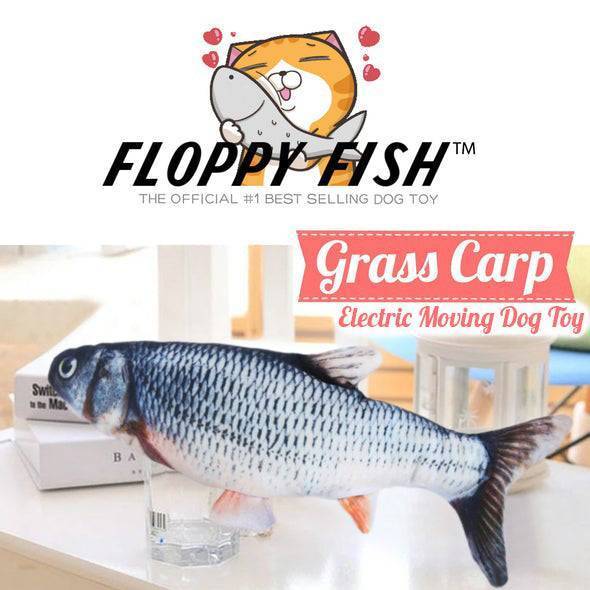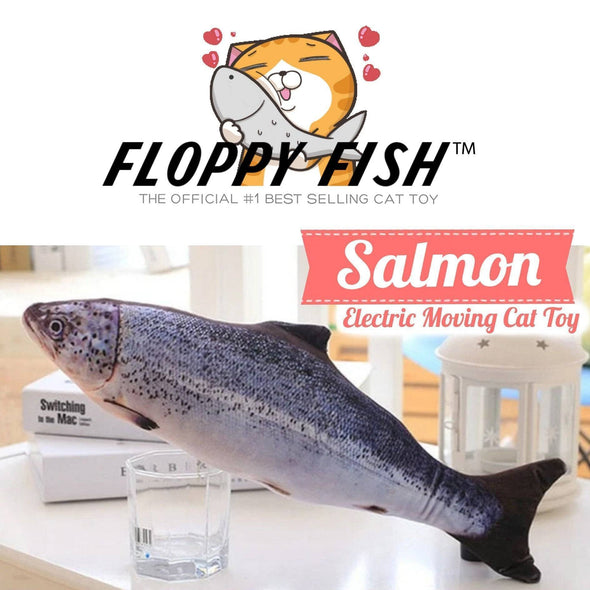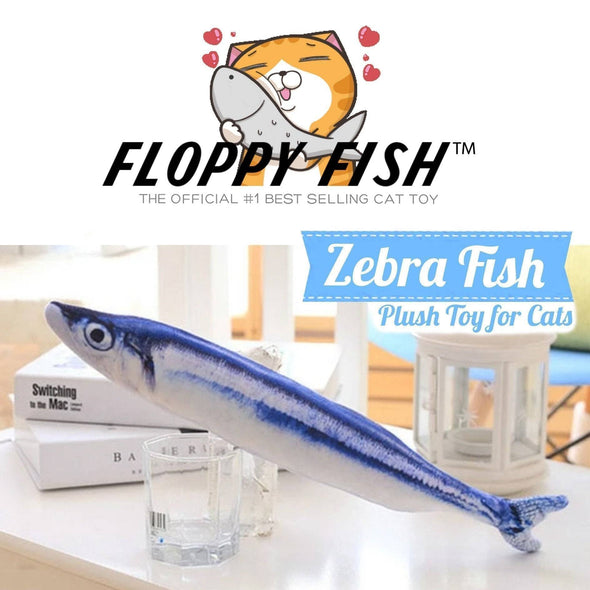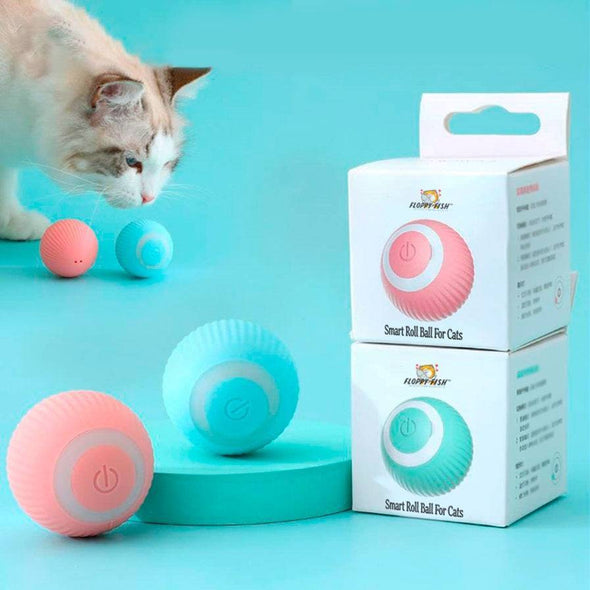How to Help Your Dog with Separation Anxiety Using Comfort Toys: The Complete Guide to Calmer, Happier Pets

Every morning, millions of pet owners face the heartbreaking sight of anxious dogs as they prepare to leave for work. Separation anxiety affects up to 40% of dogs, manifesting through destructive behaviors, excessive barking, and genuine emotional distress that can last for hours after you've gone.
The solution isn't just about finding any toy to keep your dog busy. Strategic comfort toy selection addresses specific anxiety triggers while providing the emotional support and mental stimulation anxious dogs desperately need during alone time, thunderstorms, fireworks, and other stressful situations.
What Triggers Separation Anxiety in Dogs?
Understanding your dog's anxiety triggers helps determine which comfort strategies work best. Dogs experience separation distress differently based on their personality, breed, and past experiences, but common triggers include:
- Departure Cues: Keys jingling, putting on shoes, or grabbing work bags
- Environmental Changes: New homes, schedule changes, or family member absence
- Noise Phobias: Thunderstorms, fireworks, or construction sounds
- Past Trauma: Abandonment history or shelter experiences
- Breed Tendencies: Some breeds are naturally more prone to anxiety
Each trigger requires a different comfort approach, which is why successful anxiety management often involves multiple toy types working together to create a comprehensive support system.

Interactive vs. Calming Dog Toys: Which Does Your Pup Need?
The most effective separation anxiety management combines both interactive stimulation and calming comfort. Interactive toys prevent destructive boredom behaviors, while calming toys provide emotional security during peak anxiety moments.
Interactive Toys for Mental Stimulation
Dogs left alone for 8+ hours need mental engagement to prevent anxiety-driven destruction. Motion-activated toys like the FLOPPY FISH™ Interactive Dog Toys provide independent entertainment that doesn't require human involvement.
These realistic moving fish toys respond to your dog's touch by flopping and wiggling, triggering natural hunting instincts that provide both physical activity and mental satisfaction. The unpredictable movement patterns keep dogs engaged for extended periods, making them ideal for long work days.
Calming Comfort Toys for Emotional Support
During peak anxiety moments - like the first hour after departure or during storms - dogs need emotional comfort more than stimulation. Soft, cuddly toys like the FLOPPY FISH™ Calming Duck provide the tactile comfort anxious dogs crave.
The gentle squeaking mimics companionship sounds without being overstimulating, while the plush texture satisfies the need for physical comfort. Many dogs carry these comfort toys from room to room, creating a portable security system that travels with them throughout the house.
How Do Different Situations Require Different Toy Strategies?
Successful anxiety management adapts to specific situations your dog faces. Each stressful scenario calls for targeted comfort approaches that address the unique challenges of that environment.
Dogs Home Alone During Work Hours
Eight-hour work days present the biggest challenge for anxious dogs. The key is providing varied stimulation that prevents boredom while offering comfort when anxiety peaks.
Morning setup should include one interactive toy for energy release, one comfort toy for emotional support, and one puzzle or chew toy for stress relief. Rotating these toys weekly prevents habituation and maintains their effectiveness over time.
For dogs who destroy toys when anxious, consider the durable construction of motion-activated dog toys that withstand rough play while providing continuous entertainment.
Thunderstorm and Fireworks Anxiety
Noise phobias require immediate comfort rather than stimulation. During storms or fireworks, dogs need toys they can squeeze, carry, or hide with for emotional security.
Soft plush toys work best because they can be compressed during stress, providing physical relief similar to weighted blankets for humans. The act of squeezing or chewing releases calming endorphins that naturally reduce anxiety responses to loud noises.
Smart pet owners keep a special "storm toy" that only appears during weather events, creating positive associations with the comfort item. This could be a particularly soft duck toy or plush fish that becomes your dog's designated security blanket.
New Environment Anxiety
Moving to new homes or staying in unfamiliar places disrupts dogs' sense of security. Familiar comfort toys become even more important as they provide continuity and emotional anchoring in strange environments.
Pack multiple comfort options when traveling: one for the car ride, one for the new sleeping area, and one interactive backup for when your dog needs distraction from the unfamiliar surroundings.

Why Do Some Dogs Prefer Fish Toys Over Traditional Comfort Objects?
Many dogs show surprising preferences for fish-shaped toys over typical bones or balls. The elongated shape satisfies natural prey instincts while being easy to carry and manipulate for dogs of all sizes.
Fish toys also offer versatility that other shapes can't match. Dogs can shake them like prey, carry them like puppies, or cuddle them like comfort objects. This multi-functionality makes fish toys particularly effective for dogs whose anxiety manifests in different ways throughout the day.
The realistic movement of interactive fish toys provides the mental stimulation anxious dogs need, while plush fish versions offer the softness required for comfort. This explains why collections like the FLOPPY FISH™ Plush Toy range work so effectively for anxiety management.
Can Interactive Cat Toys Help Dogs with Separation Anxiety?
Surprisingly, yes. Many interactive cat toys work excellently for small to medium dogs, especially those designed with motion sensors and realistic animal movements.
The FLOPPY FISH™ Smart Rolling Ball provides unpredictable movement patterns that keep dogs mentally engaged without requiring human interaction. The quiet motor won't disturb neighbors, making it ideal for apartment living.
For multi-pet households, having both cat and dog entertainment options creates a calmer overall environment. When all pets are mentally stimulated and content, the stress levels of anxious dogs often decrease significantly.
How to Create a Comprehensive Anxiety-Relief Toy System
Building an effective comfort toy collection requires strategic planning rather than random purchases. The most successful systems include 4-5 carefully chosen items that address different aspects of separation anxiety.
The Complete Anxiety-Relief Toolkit
- Primary Interactive Toy: Motion-activated fish for mental stimulation
- Comfort Companion: Soft plush toy for emotional support
- Stress-Relief Chewer: Durable toy for anxiety-driven chewing
- Puzzle/Treat Toy: Food-dispensing toy for prolonged engagement
- Travel Security: Small comfort toy for car rides and vet visits
Introduce new toys gradually to prevent overwhelming anxious dogs. Start with one new item per week, allowing your dog to build positive associations before adding the next component.

What About Dogs Who Destroy Toys When Anxious?
Destructive behavior during anxiety episodes is common and doesn't mean comfort toys won't work. It means you need strategic toy selection and management rather than giving up on the approach entirely.
For destructive dogs, prioritize bite-resistant construction and supervise initial interactions with new toys. Remove damaged toys immediately to prevent ingestion hazards, but replace them rather than eliminating comfort objects entirely.
Some anxious dogs do better with multiple cheaper comfort toys that can be replaced regularly, while others benefit from one high-quality interactive toy that withstands rough treatment. Observe your dog's behavior patterns to determine which approach works best.
How to Introduce Comfort Toys to Severely Anxious Dogs
Dogs with severe separation anxiety need gentle, gradual introduction to new comfort items. Rushing the process can increase anxiety rather than providing relief.
Start by placing new toys near your dog's favorite resting spots without forcing interaction. Allow natural curiosity to drive initial contact rather than encouraging immediate play.
For dogs who are toy-averse due to past trauma, begin with the most non-threatening option - usually a soft, quiet plush toy placed at a distance. Positive associations build slowly, so patience is essential for long-term success.
Consider reading our detailed guide on managing separation anxiety through environmental enrichment for additional behavioral strategies that complement toy-based comfort approaches.
When Should You Seek Professional Help for Dog Anxiety?
While comfort toys provide excellent support for mild to moderate anxiety, severe cases may require professional intervention from veterinarians or certified animal behaviorists.
Warning signs that indicate professional help is needed include:
- Self-harm behaviors like excessive licking or scratching
- Destructive behaviors that cause property damage or injury risk
- Complete loss of appetite or bathroom accidents despite house training
- Aggression toward family members during departure preparations
- Panic responses that don't improve with comfort measures
Comfort toys work best as part of a comprehensive anxiety management plan that might include training, medication, and environmental modifications. They're a valuable tool, but not always a complete solution for severe cases.
For insights on how environmental enrichment supports behavioral modification, our guide to transforming unwanted behaviors through play offers evidence-based strategies that complement comfort toy usage.
Building Long-Term Success with Comfort Toy Rotation
Even the best comfort toys lose effectiveness without proper management. Successful long-term anxiety relief requires strategic toy rotation that maintains novelty while providing consistent comfort.
Weekly rotation schedules work well for most dogs: keep 2-3 toys available while storing 2-3 others to reintroduce later. This approach prevents habituation while ensuring your dog always has familiar comfort options available.
Monitor your dog's preferences and adjust accordingly. Some dogs need the security of one consistent comfort toy, while others benefit from variety. Let your individual dog's behavior guide your rotation strategy rather than following rigid schedules.
Explore our complete selection of anxiety-relief and interactive pet toys to build the perfect comfort system for your dog's unique needs and personality.
Frequently Asked Questions
What are the best toys for dogs home alone during work hours?
The best toys for dogs home alone include interactive motion-activated toys like the FLOPPY FISH™ that move independently, comfort toys like calming duck plushies for emotional support, and puzzle toys for mental stimulation. Rotating different toy types prevents boredom and addresses various anxiety triggers throughout the day.
How do comfort toys help dogs during thunderstorms and fireworks?
Comfort toys provide emotional security during loud noises by offering familiar textures and scents. Soft plush toys can be squeezed for stress relief, while toys with gentle sounds can mask frightening noises. The physical act of holding or chewing a comfort toy releases calming endorphins that reduce anxiety responses.
Should I use interactive or calming toys for separation anxiety?
Both types serve different purposes. Interactive toys like motion-activated fish toys provide mental stimulation and prevent destructive behaviors, while calming toys like plush ducks offer emotional comfort. The best approach combines both: interactive toys for energy release and calming toys for comfort during peak anxiety periods.
How long should I leave comfort toys with my anxious dog?
Comfort toys can be left with dogs throughout the day, but rotate them to maintain interest. For severe anxiety, provide 2-3 different toy types: one interactive for mental stimulation, one comfort toy for emotional support, and one chew toy for stress relief. Monitor for wear and replace damaged toys immediately.
What size comfort toy is best for large dogs with anxiety?
Large dogs need appropriately sized toys they can carry and manipulate easily. Look for toys 8-12 inches long that are durable enough for larger mouths but soft enough for comfort. The FLOPPY FISH™ dog toys are specifically designed to work for both small and large breeds with reinforced construction.

Transform Your Anxious Dog's Life Starting Today
Don't let separation anxiety control your dog's happiness or your peace of mind. The right combination of comfort and interactive toys can dramatically improve your pet's emotional well-being and reduce destructive behaviors within weeks.
Start building your dog's anxiety-relief toolkit with proven solutions like the FLOPPY FISH™ Interactive Dog Toy for mental stimulation and the FLOPPY FISH™ Calming Duck for emotional comfort. Thousands of anxious dogs are already living calmer, happier lives with the right support system.
Your dog deserves to feel secure and content, whether you're home or away. Take the first step toward transforming their anxiety into confidence with comfort toys designed specifically for emotional support and mental enrichment.




